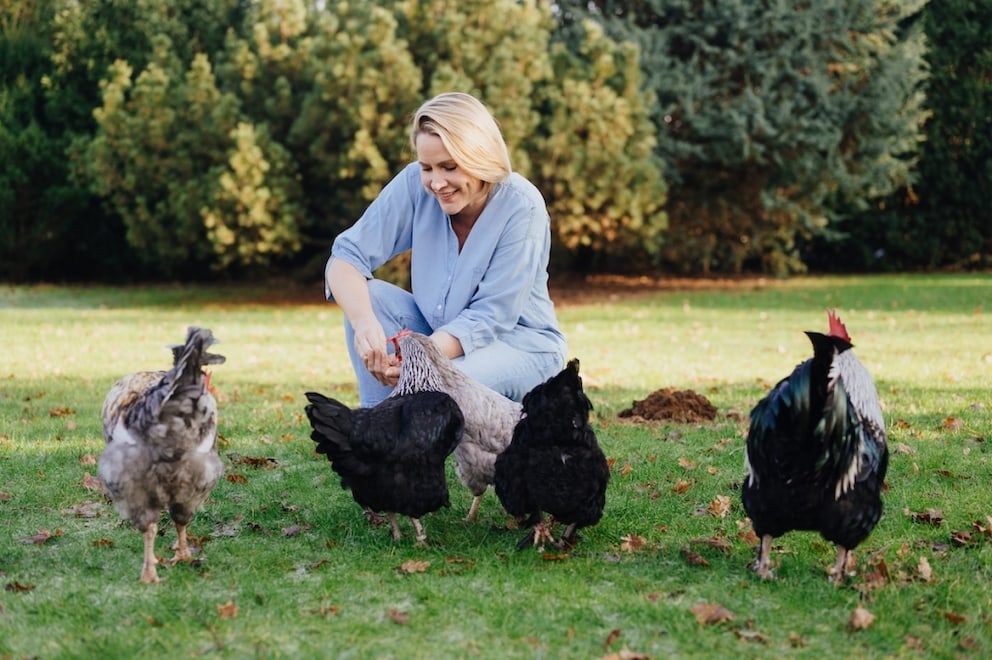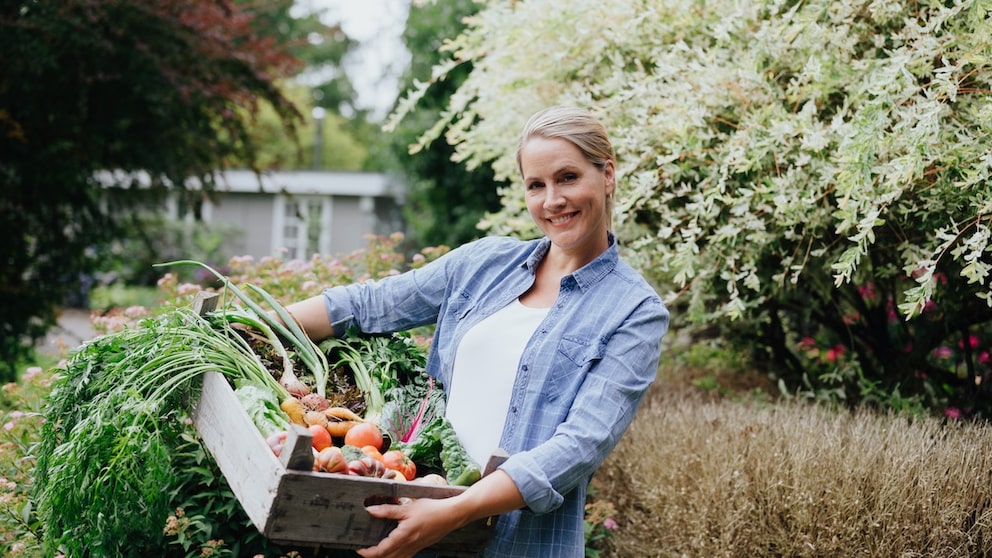March 15, 2025, 2:46 pm | Read time: 4 minutes
Judith Rakers is certainly known to many from television. Until a few years ago, she presented the Tagesschau news program, among other things. In the meantime, she has cut back a little. She has hung up the news and taken up a pitchfork, soil, and seeds instead. At myHOMEBOOK, she talks about sustainability and her current gardening projects.
Sustainability is one of Judith Rakers’ defining themes. Avoiding plastic and chemicals is a matter close to her heart. “Prevention instead of displacement and destruction” is her motto. And this is also reflected in her garden and her latest project.
“What Kind of Idiocy Is It to Wrap a Cucumber in Plastic?”
“Plastic is one of the biggest problems of our time,” says Rakers in an interview with myHOMEBOOK. Whether it’s food in the supermarket or garden products in the hardware store — many items have plastic handles or are wrapped in plastic. Plastic packaging is even used in unnecessary places. “A cucumber doesn’t have to be wrapped in plastic just because it lasts longer.”
But Rakers’ annoyance isn’t limited to cucumbers: “So many other items are unnecessarily packaged in plastic. For instance, when you purchase a vacuum cleaner or a razor, upon opening the packaging, you find everything additionally wrapped in plastic bags.”

She explains that she has become increasingly aware of this as a problem in recent years. She now operates an online store for organic seeds and regionally produced gardening accessories, for which she also creates sustainable and reusable packaging. “I’m not a super-organic person at all, but I think that if you can do it differently, then you should do it differently.”
“What Kind of Poor, Pigmentless Carrot Is That?”
Before Rakers began her journey of self-sufficiency, she knew little about the subject. “For example, I had no idea when a carrot could actually be regional and seasonal. After all, they are available for purchase throughout the year. Of course, I knew that a tomato can’t come from the field next door in December, but I didn’t know whether carrots could come from the field in March.” She now knows which vegetables can be grown without artificial light and heating.
“For many people, sustainability is always associated with sacrifice,” says Judith Rakers. “But that’s wrong. Sustainability can also encompass variety, enrichment, enjoyment, and beauty. “If I eat regionally and seasonally, my diet is much more varied than if I put tomatoes in my shopping cart all year round.”
And if you grow your own vegetables on the balcony or in the garden, you can also bring great colors to your plate with rare varieties: “Potatoes with dots, blue kohlrabi, striped beets, purple cauliflower, red kale, or even blue peas, which look stunning as they cascade down my raised bed.”
For Rakers, sustainable gardening can also be very practical; she explains: “Günther Grabowski is my employee of the month, every month anew.” However, he is not a gardener but a mole. “At first, I wanted to get rid of him, but now I’m happy about every new molehill. The soil is free of roots and is perfect for my raised beds or planters.”

Garden project 4 reasons to create a raised bed in the fall

Ask the expert 9 tips for less plastic waste

Preparing for the Next Season Winterize the Vegetable Patch Now
“Plastic Is One of the Biggest Problems of Our Time”
A large portion of the gardening tools available in Germany are imported from the Far East. But sustainability starts at this point if you look at the transportation routes, for example, Rakers explains. She also wants to counteract this in her latest project. Together with the North German manufacturer Hoklartherm, Rakers has developed greenhouses and raised beds that are sustainable. She explains: “The products are made in Germany, we don’t use plastic, and the pest control is chemical-free.”
“This is an absolute dream project for me and also a passion topic,” she explains. She spent a year planning, testing, and fine-tuning with great enthusiasm. Indeed, the goal was for the products to be not only as sustainable as possible but also visually appealing. “We made sure that all the fittings and accessories in our greenhouse collection also matched visually. After all, a greenhouse is ideally also a design object in the garden — and not something you have to hide behind a bush because the plastic is green and mossy.”

